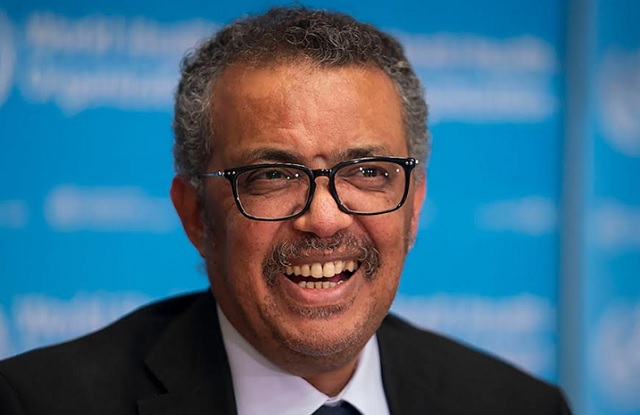
Uganda improves but 50% of people remain unserved by Universal Health Coverage services
Kampala, Uganda | THE INDEPENDENT | The World Health Organisation (WHO) and the World Bank have jointly published the 2023 Universal Health Coverage (UHC) Global Monitoring Report, revealing an alarming stagnation in the progress towards providing people everywhere with quality, affordable, and accessible health care.
Uganda has registered some progress by over 50% of the population remains unserved by Universal Health Coverage services.
Uganda has done well on diabetes prevalence, tobacco non-use, HIV Anti-retroviral therapy, TB treatment, and child immunization (DTP3). But it has performed badly on the health workforce, health bed density, hypertension treatment, and access to basic sanitation.
Averagely, Uganda’s score on the Universal Health Coverage (UHC) service coverage index (SCI) from 2021 has improved from 22 in 2000 to 49 in 2021, according to the report.
Released ahead of the High-Level Meeting on UHC at the 78th United Nations General Assembly, this report exposes a stark reality based on the latest available evidence more than half of the world’s population is still not covered by essential health services. Furthermore, 2 billion people face severe financial hardship when paying out-of-pocket for the services and products they needed.
“The COVID-19 pandemic was a reminder that healthy societies and economies depend on healthy people,” said Dr Tedros Adhanom Ghebreyesus, WHO Director-General. “The fact that so many people cannot benefit from affordable, quality, essential health services not only puts their own health at risk, it also puts the stability of communities, societies and economies at risk, We urgently need stronger political will, more aggressive investments in health, and a decisive shift to transform health systems based on primary health care.”
The 2023 report found that, over the past two decades, less than a third of countries have improved health service coverage and reduced catastrophic out-of-pocket health spending. Moreover, most countries for which data are available on both UHC dimensions (96 out of 138) are off-track in either service coverage, financial protection, or both.
“We know that achieving universal health coverage is a critical step in helping people escape and stay out of poverty, yet there continues to be increased financial hardship, especially for the poorest and most vulnerable people,” said Mamta Murthi, Vice President for Human Development, World Bank. “This report paints a dire picture, but also offers evidence on ways to prioritize health in government budgets and strengthen health systems for greater equity in both the delivery of essential quality health services and financial protection.”
Slowing expansion of essential health services
While health service coverage improved since the beginning of the century, progress has slowed since 2015, when the Sustainable Development Goals were adopted. Notably, there was no improvement from 2019 to 2021. While services for infectious diseases saw significant gains since 2000, there has been little to no improvement in service coverage for noncommunicable diseases and reproductive, maternal, newborn, and child health services in recent years. In 2021, about 4.5 billion people, more than half of the global population, were not fully covered by essential health services. And this estimate does not yet reflect the potential long-term impacts of the COVID-19 pandemic.
Out-of-pocket health spending worsens
Catastrophic out-of-pocket health spending, defined as exceeding 10% of a household budget, continues to rise. More than one billion people, about 14% of the global population, experienced such large out-of-pocket payments relative to their budgets. But even small expenditures in absolute terms can be devastating for low-income families; approximately 1.3 billion individuals were pushed or further pushed into poverty by such payments, including 300 million people who were already living in extreme poverty.
Out-of-pocket health payments can also cause individuals to forego essential care and force families to choose between paying for a visit to the doctor, buying food and water, or sending their children to school. Such trade-offs can spell the difference between the early treatment of a preventable disease and, at a later stage, suffering severe illness or even death. Addressing this problem requires progressive health financing policies that exempt those with limited ability to pay for health services.
In Uganda, based on the 2017 PPP US$2.15 a day poverty line, there was a 3.1% increase in the head count of those pushed into poverty due to Out Of Pocket health spending. Using the same baseline, there was a 27% leap in poor spending on health.
Getting back on right track
Achieving universal health coverage by 2030 is crucial for fulfilling the promise of the 2030 Agenda for Sustainable Development and realising the fundamental human right to health.
To reach the goal of UHC, substantial public sector investment and accelerated action by governments and development partners are essential. Key actions include a radical reorientation of health systems towards a primary health care approach, advancing equity in health-care access and financial protection, and investing in robust health information systems.
These shifts are essential to counter the impact of COVID-19 on health systems and the health workforce globally, as well as the new challenges posed by macroeconomic, climate, demographic, and political trends that threaten hard-won health gains worldwide.
The 2023 UHC Global Monitoring Report serves as a wake-up call to the global community, highlighting the urgent need to prioritise and invest in UHC to ensure that everyone gains access to quality, affordable, and accessible healthcare without suffering financial hardship.
Table: Universal health coverage (UHC) service coverage index (SCI) in East Africa
| Country | Coverage |
| Uganda | 49 |
| Rwanda | 49 |
| Kenya | 52 |
| Tanzania | 43 |
| Burundi | 41 |
 The Independent Uganda: You get the Truth we Pay the Price
The Independent Uganda: You get the Truth we Pay the Price




Quality, affordable and accessible: that is what the ordinary individuals that used to visit Kawemoe HC Iii and two other facilities from the same district keep dreaming about
It is Kawempe HCIII